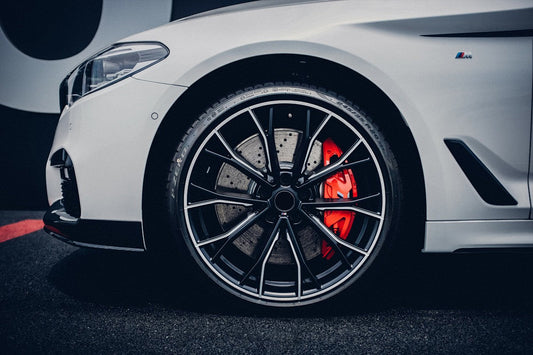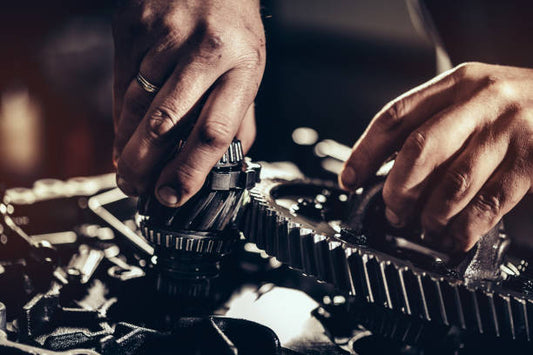A Scientific Guide to Engine Oil Grades and Selection: API, SAE, and Base Oil Analysis
I. Core Standards for Engine Oil Quality
Engine oil quality is primarily defined by two international standards: API (American Petroleum Institute) and SAE (Society of Automotive Engineers). These standards categorize oil based on performance and viscosity, respectively.

-
API Quality Grades
-
Gasoline Engines (S Series): Ranging from SA to SP, with later letters indicating better environmental performance, oxidation resistance, and anti-wear properties. For example, SP-grade oils meet China VI emission standards and optimize fuel economy.
-
Diesel Engines (C Series): From CA to CK-4, following the same letter progression, suitable for various diesel engine conditions.
-
Universal Oils (S/C Dual Ratings): Compatible with both gasoline and diesel engines, such as SN/CF-4.
-
-
SAE Viscosity Grades
-
Low-Temperature Fluidity (Number before "W"): E.g., 0W, 5W. Lower numbers indicate better cold-start performance (0W works at -35°C).
-
High-Temperature Protection (Number after "W"): E.g., 30, 40. Higher numbers indicate stronger oil film strength under high loads.
-
All-Season Oils: E.g., 5W-30, balancing cold-start and high-temperature performance.

-
II. Base Oil Classification and Performance Differences
Base oils make up 70%-90% of engine oil and determine its stability and longevity. API categorizes base oils into five groups:
| Group | Process | Performance | Examples |
|---|---|---|---|
| Group I Mineral | Simple crude distillation | Low cost, prone to oxidation, suitable for older vehicles | Traditional budget oils |
| Group III Synthetic | Hydrocracking | Heat-resistant, good fluidity, cost-effective | Most "full synthetic" oils |
| Group IV PAO | Polyalphaolefin (PAO) synthesis | Superior oxidation resistance, long lifespan (15,000 km+) | Premium synthetics (e.g., TERZO) |
| Group V Esters | Ester-based synthesis | Excellent extreme-pressure lubrication, but costly and less stable | Racing/aviation oils |
Advantages of Full Synthetic Oils:
-
Shear Stability: PAO's uniform molecular structure ensures stable high-temperature high-shear (HTHS) viscosity, reducing oil film rupture risks.
-
Low-Temperature Fluidity: Low-viscosity oils like 0W-20 remain fluid at -40°C, minimizing cold-start wear.

III. Key Roles and Quality Comparison of Additives
Additives (10%-30% of oil) directly impact overall performance:
| Additive Type | Core Function | Premium Indicators | Risks of Low Quality |
|---|---|---|---|
| Anti-Wear | Reduces metal friction | Balanced Zn/P content | Increased wear + noise |
| Detergents | Prevents carbon deposits | Efficient Ca/Mg formulas | Sludge buildup, clogging |
| Antioxidants | Delays oil oxidation | Phenolic/amine blends | Sludge formation + short lifespan |
| Viscosity Modifiers | Stabilizes high-temp viscosity | Shear-stable polymers | Thinning at high temps |
Risks of Low-Quality Additives: Increased engine wear, higher fuel consumption, and potential failures.
IV. Scientific Recommendations for Oil Selection
-
Follow Manufacturer Guidelines
-
Japanese/American cars: Often recommend low-viscosity oils (0W-20, 5W-30) due to precise engine tolerances.
-
German turbocharged cars: Require high-viscosity oils (5W-40, 0W-40) for high-temperature, high-pressure conditions.
-
Domestic/older vehicles: Prefer mineral or semi-synthetic oils (e.g., 10W-40) to compensate for lower machining precision.
-
-
Adapt to Climate and Driving Habits
-
Cold regions (<-20°C): 0W-20, 5W-30 for cold-start protection.
-
Hot/aggressive driving: 10W-50, 5W-40 for enhanced high-temperature protection.
-
-
Balance Cost and Performance
-
Mineral oils (30-60 CNY/L): Suitable for short commutes or budget users but require frequent changes (every 3,000 km).
-
Full synthetic oils (130-300 CNY/L): Long-lasting protection (10,000-15,000 km), ideal for high-performance or long-distance driving.
-
V. Future Trends and Technical Challenges
-
Rise of Low-Viscosity Oils
-
China VI Emissions: Low-viscosity oils (e.g., 0W-20) reduce friction, saving 1%-3% fuel.
-
Engine Low-Temperature Trends: Atkinson cycle and EGR technologies lower combustion temperatures, aligning with low-viscosity needs.
-
-
Breakthroughs in Synthetic Technology
-
PAO-Ester Blends: Enhance high-temperature stability and lubrication (e.g., TERZO Ultra series).
-
Smart Viscosity Adjustment: Magneto-rheological oils dynamically adjust viscosity based on conditions, currently in experimental stages.

-
Conclusion: Engine oil selection requires balancing API/SAE standards, base oil quality, and additive performance, while considering vehicle type, climate, and driving habits. Although full synthetic oils are costlier, their longevity and stability provide superior protection for modern engines. Moving forward, achieving a balance between low viscosity and high performance will be key.
Data Sources: API/SAE standards, Pacific Auto Network, Car Owner's Guide, Sohu Auto.




